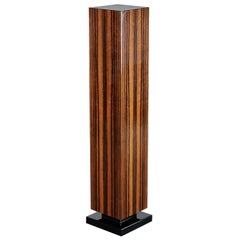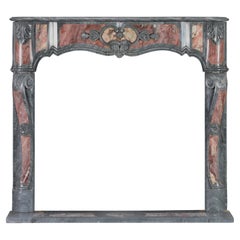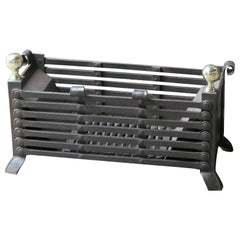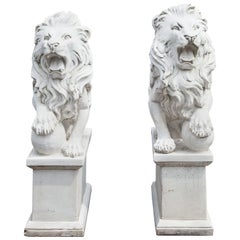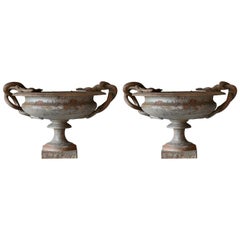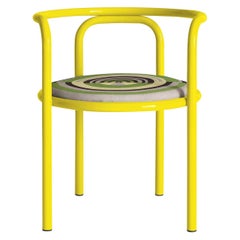Continental Europe - Building and Garden Elements
2010s German Art Deco Continental Europe - Building and Garden Elements
Macassar, Lacquer
Early 18th Century French Regency Antique Continental Europe - Building and Garden Elements
Marble
19th Century British Victorian Antique Continental Europe - Building and Garden Elements
Brass, Wrought Iron, Iron
21st Century and Contemporary Continental Europe - Building and Garden Elements
Marble
Mid-19th Century French Antique Continental Europe - Building and Garden Elements
Iron
2010s Italian Continental Europe - Building and Garden Elements
Steel
Early 20th Century British Art Nouveau Continental Europe - Building and Garden Elements
Copper, Steel
1960s American Mid-Century Modern Vintage Continental Europe - Building and Garden Elements
Aluminum
21st Century and Contemporary French Napoleon III Continental Europe - Building and Garden Elements
Iron
17th Century French Louis XIII Antique Continental Europe - Building and Garden Elements
Wrought Iron
2010s Italian Continental Europe - Building and Garden Elements
Steel
19th Century French Louis Philippe Antique Continental Europe - Building and Garden Elements
Stone
1970s Italian Modern Vintage Continental Europe - Building and Garden Elements
Metal
1930s Belgian Art Nouveau Vintage Continental Europe - Building and Garden Elements
Ceramic
21st Century and Contemporary Spanish Continental Europe - Building and Garden Elements
Stainless Steel
1970s Italian Modern Vintage Continental Europe - Building and Garden Elements
Metal
19th Century Italian Baroque Antique Continental Europe - Building and Garden Elements
Marble
21st Century and Contemporary Italian Modern Continental Europe - Building and Garden Elements
Cedar
19th Century French Hollywood Regency Antique Continental Europe - Building and Garden Elements
Metal, Brass, Bronze, Iron
Mid-20th Century Italian Continental Europe - Building and Garden Elements
Brass
Mid-20th Century English Hollywood Regency Continental Europe - Building and Garden Elements
Iron, Gold Leaf
Mid-20th Century Italian Mid-Century Modern Continental Europe - Building and Garden Elements
Bamboo, Rattan
1990s Italian Mid-Century Modern Continental Europe - Building and Garden Elements
Metal, Steel
1950s Danish Mid-Century Modern Vintage Continental Europe - Building and Garden Elements
Brass
18th Century Belgian Regency Antique Continental Europe - Building and Garden Elements
Marble
19th Century Unknown Louis XV Antique Continental Europe - Building and Garden Elements
Marble
19th Century French Louis XIV Antique Continental Europe - Building and Garden Elements
Wood
1950s German Mid-Century Modern Vintage Continental Europe - Building and Garden Elements
Brass
21st Century and Contemporary Finnish Organic Modern Continental Europe - Building and Garden Elements
Brass
18th Century French Neoclassical Antique Continental Europe - Building and Garden Elements
Brass, Wrought Iron
19th Century French Napoleon III Antique Continental Europe - Building and Garden Elements
Iron
1950s Italian Mid-Century Modern Vintage Continental Europe - Building and Garden Elements
Wrought Iron, Metal
Early 20th Century European Victorian Continental Europe - Building and Garden Elements
Iron
Early 20th Century European Louis XV Continental Europe - Building and Garden Elements
Marble, Carrara Marble
19th Century Dutch Victorian Antique Continental Europe - Building and Garden Elements
Brass, Copper
Early 1900s Spanish Art Nouveau Antique Continental Europe - Building and Garden Elements
Ceramic
2010s European Modern Continental Europe - Building and Garden Elements
Ceramic
1930s Czech Art Deco Vintage Continental Europe - Building and Garden Elements
Glass, Oak
Mid-20th Century Swiss Mid-Century Modern Continental Europe - Building and Garden Elements
Cement
20th Century Neoclassical Continental Europe - Building and Garden Elements
Carrara Marble
1960s French Mid-Century Modern Vintage Continental Europe - Building and Garden Elements
Aluminum
1880s French Antique Continental Europe - Building and Garden Elements
Terracotta
2010s Italian Continental Europe - Building and Garden Elements
Aluminum
19th Century British Victorian Antique Continental Europe - Building and Garden Elements
Brass
21st Century and Contemporary Spanish Art Nouveau Continental Europe - Building and Garden Elements
Brass
Early 19th Century French Neoclassical Antique Continental Europe - Building and Garden Elements
Iron, Wrought Iron
21st Century and Contemporary Portuguese Modern Continental Europe - Building and Garden Elements
Marble, Stainless Steel
Early 20th Century Belgian Art Deco Continental Europe - Building and Garden Elements
Ceramic
18th Century French Antique Continental Europe - Building and Garden Elements
Stone, Limestone
Late 19th Century French Louis XV Antique Continental Europe - Building and Garden Elements
Marble
Late 18th Century Dutch Antique Continental Europe - Building and Garden Elements
Marble, Carrara Marble
1950s American Mid-Century Modern Vintage Continental Europe - Building and Garden Elements
Steel, Iron
2010s Italian Mid-Century Modern Continental Europe - Building and Garden Elements
Brass, Iron
21st Century and Contemporary Italian Modern Continental Europe - Building and Garden Elements
Plastic
Early 19th Century French Neoclassical Antique Continental Europe - Building and Garden Elements
Brass, Copper
2010s Italian Continental Europe - Building and Garden Elements
Marble, Stainless Steel
1960s Scandinavian Mid-Century Modern Vintage Continental Europe - Building and Garden Elements
Brass, Copper
Late 18th Century French Antique Continental Europe - Building and Garden Elements
Terracotta
Early 20th Century French Continental Europe - Building and Garden Elements
Iron
Early 20th Century Italian Art Nouveau Continental Europe - Building and Garden Elements
Ceramic
Read More
39 Incredible Swimming Pools
It's hard to resist the allure of a beautiful pool. So, go ahead and daydream about whiling away your summer in paradise.
This Lavish 18th-Century Chimneypiece Comes from a Historic Scottish Estate
The exceptionally crafted mantel was saved despite the home’s regrettable demise.
A Pair of Monumental Stone Tigers Protect and Guide Wandering Souls
The Qing dynasty beasts honored the dead and warned off malicious spirits.
Andrés Monnier’s Stone Tub Makes Bathing a Rite of Renewal
The dramatic piece transforms a daily scrub into an act of communion with the elements.
Meet the Siblings behind the Exquisite Outdoor Furniture of McKinnon and Harris
Anne and Will Massie apply the lessons of the past to create alfresco pieces as timeless as the traditions that inspire them.
35 Wondrous Outdoor Dining Spaces
Eating meals alfresco is one of the great pleasures of warm weather, and a beautifully appointed space only heightens the experience. Get inspired by these delectable dining areas as you think about creating your own outdoor oasis.
In These Chic Homes, Indoors and Outdoors Freely Mingle
Through potted plants, garden furniture, nature-inspired art and architectural apertures, designers are bringing the outside in.
24 Perfect Patios with Fire Pits and Fireplaces
In these stylish spaces, the outdoor season extends year round.
